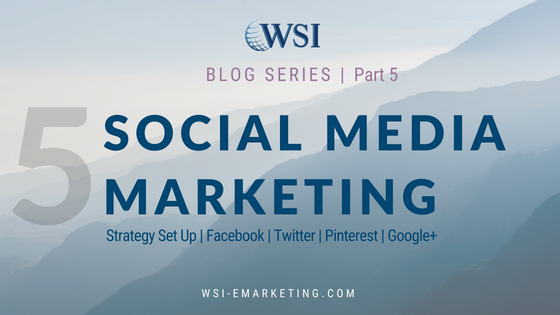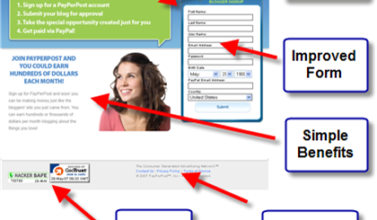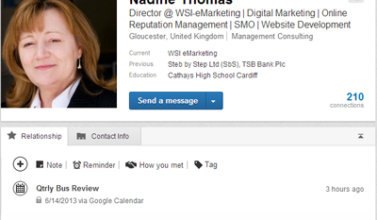
We define social media marketing as promoting a product or service through the use of social media platforms and websites. This includes posting text and image updates, videos, and other content that drives engagement along with paid social media advertising. With more and more businesses using social media, it’s become an integral part of the digital marketing strategy.
Getting Started With Social Media Marketing (SMM)
The most important aspect of creating social media marketing campaigns is considering your business goals. You need a social strategy before you start, just like you would study a route before embarking on a journey.
Consider Your Business Goals
Before getting started, ask yourself what you want to accomplish with your social media efforts. In addition, you must determine parameters in order to make your objectives achievable. Always be clear about your goals and keep the following questions in mind. Use this as an exercise if you like and answer each question from your business’ perspective.
- What type of social media followers or fans would you like to attract?
- What sets you apart from the rest? Be sure to state that across your social media profiles from Facebook to Twitter and Google Plus. Remember, your message must be consistent across all channels.
- How much time are you willing to spend on your social media marketing efforts? It’s not a bad idea to outsource to a company or set up a virtual assistant if you’re too busy.
- What exactly do you hope to achieve? Is it about brand awareness, lead generation, nurturing or purely traffic-driven?
Remember, social media marketing can help with several business goals from increasing web traffic, to brand awareness and improving conversion rates. It can also improve communication and interaction with key audience members. A big social media audience that engages regularly will make it easier to achieve many of your marketing goals.
Choose The Right Social Media Channels For Marketing
It may seem obvious but not all businesses benefit from using the same social media channels. You need different approaches for social media marketing channels which means a uniquely tailored strategy for each platform. A travel agency, for example, uses highly visual content and should focus their efforts on Instagram or Pinterest. Conversely, a B2B accounting firm would more than likely benefit more from LinkedIn, Twitter and possibly Google+.
We take a brief look at how to use social media for marketing based on the unique audience and environment of the platform.
Facebook in Social Media Marketing
While Facebook has experienced some controversy of late, the platform is still an immensely powerful social media marketing tool. The casual and friendly platform means you need an active social media marketing strategy. A great place to start is to create a Facebook Business Fan Page. It’s imperative to focus on a good layout as the visual component is key to Facebook.
The behemoth of social media was once a social playground where people chatted with friends, shared a few stories and photos but it’s become invaluable to both B2C and B2B marketers. With organic reach on Facebook being extremely limited, consider a cost-effective Facebook ad strategy. A good campaign can have a big impact on your organic presence and subsequently help with lead generation and conversions.
Facebook offers more than many people realise and knowing how to use Facebook as a marketing tool for your brand is essential. We will take a closer look at social media advertising in the next part of our blog series along with PPC.
Google+ and Social Media Marketing
While Google+ initially entered the market as a Facebook competitor, it now serves a much more niche audience. It might not work for everybody but there are several communities that are very active on Google+ including H&M.
Google+ is effectively Google’s flagship social network where users can connect often and very easily through interests and friendship. Here, interactions with individuals or companies are based on profiles or pages. Instead of an independent service, Google+ is integrated and connected through all Google services forming part of their digital ‘ecosystem’.
Google+ allows you to post updates, upload and share photos, videos or links and view your +1s. There are also Google+ circles which allow you to segment your followers into smaller groups. This enables you to share more relevant information with a specific ‘subset’ of followers. You may want to create a circle for “Web design” and include special discounts and exclusive offers only to that group. In addition, you can also host video conferences with Google Hangouts and experiment using the feature in a few creative ways.
Pinterest In Social Media Marketing
As many marketers know, Pinterest is one of the fastest growing social media marketing networks. While the image-focused platform is ideal for retail, anyone can benefit from using Pinterest for social media marketing. It’s a network where people can find inspiration about certain topics or get ideas about what new products to buy.
From a business standpoint, Pinterest can be a great source of referral traffic through the effective use of ‘Pins’. Every pin links back to a source whether it’s your website, dedicated landing page or blog. Businesses can use unique ‘pinboards’ to showcase their products and services in an organised manner while developing a brand personality. People can follow a business account or just certain boards which they find interesting.
As a business, apply these FOUR simple Pinterest tips and tricks for a successful campaign
- Add Pinterest save buttons to your site, dedicated landing pages or blogs
- Pin consistently, at least once a day
- Focus on beautiful visuals
- Include appropriate and relevant text (keywords) to your pins
Twitter and Social Media Marketing
Twitter is a network with unique capabilities that allows both consumers and brands to be themselves, build relationships and optimise engagement. Contrary to what some may believe, growing a real following on Twitter is more than just sending out Tweets of new products or events. Truth is, engagement with your target audience trumps all and that means interacting with them.
Some of the main reasons businesses use Twitter include information sharing, driving engagement for promotions or events, networking, branding and reputation management. Being successful on Twitter starts with communicating one on one and making Tweets conversational. Use @mentions, retweets and even direct messages in some scenarios. Tweets should not only consist of short headlines with a link or inspirational quotes, they need to open the door for possible communication.
According to Twitter, there are several elements that impact engagement such as photos, hashtags, links, videos and tweets containing numbers (facts, statistics or sport results). Research suggest that adding videos, links and photographs can increase the number of shares, retweets or likes.
YouTube And Social Media Marketing
People talk about social media all the time but they don’t always include YouTube. Although YouTube is the second ranked search engine of choice by volume, it deserves more credit as a fantastic platform to create and share video content. YouTube is easy to use and can create multiple social signals which makes it an important part of any social media marketing strategy.
While many businesses attempt to create viral video content, those chances are pretty slim in reality. You’re better off creating informative and instructional “how-to” videos which will add far more value. Here’s what you should do to maximise YouTube:
- Keep videos short (the average length is 4 minutes)
- Analyse your competitors and get ideas of what they do and say
- Use a professional marketing team or digital marketing agency
- Give videos a good name and description
- Use your existing social media accounts to promote your videos
- Add in-video links to keep people on your channel
Conclusion
Majority of social media platforms rely heavily on the visual element so attractive content will greatly increase engagement and conversions. Use pictures, photographs and videos of your staff, products, services and events. Content sharing is a necessity and probably one of the best ways to increase brand awareness.
The golden rule is to always focus on people within your local community or your industry type. The more involved and engaged you are locally could result in leads and buyers finding you. A free and effective way to help the right people find you is using relevant hashtags.
Part SIX of our blog series will focus on PPC and element of social media advertising. Hope you found this article interesting and please get in touch if you need help with your social media marketing strategy. We specialise in SEO, PPC, Web development, Social, Marketing Automation and more.
Are you using social media marketing successfully in your business? Which social platforms have yielded the best results for you? Please share your comments in the section below or find us on social media as our readers would love to hear from you.
Related Post
What’s the single...
Adam Vincenzini from Comms Corner recently posted a very good article which I think goes...
- January 25, 2011
- By Rob Thomas
- Blogging
Effective Facebook Marketing...
With over 600 million users, Facebook represents the single most connected platform on...
- March 1, 2011
- By Nadine Thomas
- Latest Online Trends
How To Drive Sales With...
Landing pages have long been the primary tool of the web-savvy marketer. Whether the...
- June 12, 2011
- By Nadine Thomas
- e-Commerce
Content Sharing Via Social...
Target marketing to meet your business goals Is your business using social media channels...
- June 15, 2011
- By Nadine Thomas
- Digital Marketing
Social Media Spotlight:...
Until Facebook came along, Google was the undisputed online leader. However, this started...
- August 23, 2011
- By Nadine Thomas
- Social Media
10 Best Ways to take...
Others may have seen a pop-up ‘invitation to upgrade’ message when they accessed...
- June 1, 2013
- By Rob Thomas
- Digital Marketing











Leave a Comments